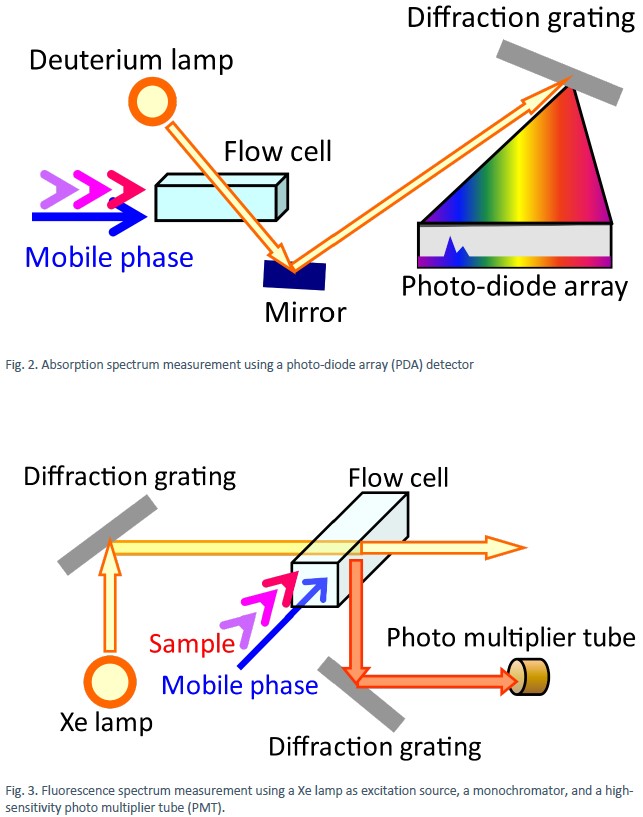LC/MS:Liquid Chromatography Mass Spectrometry
Features
LC/MS is a high-performance liquid chromatography (HPLC) in which components are separated and identified. Additional mass spectroscopy (LC/MS/MS) allows selective detection of specific molecular masses. Compared to methods with only one MS step, LC/MS/MS is less susceptible to other coexisting substances, thereby enabling highly selective analyses. Features include:
- Analysis of components with large molecular mass and/or relatively high polarity
- Ionization methods (up to about 100 °C) suitable for thermally unstable materials
- Large selection of ionization methods: Electrospray Ionization (ESI), Atmospheric Pressure Chemical Ionization (APCI), Atmospheric Pressure Photoionization (APPI).
- Multivariate analysis can be used to extract differences in number of constituents between samples batches
Application Examples
- Component analysis of cleaning solutions and surfactants
- Trace impurity analysis in solutions
- Evaluation of material purity and degradation
- Qualitative and quantitative analysis of additives in polymers and other chemicals
- Qualitative analysis of inkjet materials
- Qualitative and quantitative analysis of biomaterials in agriculture, biochemistry, and biotechnology
- Comprehensive analysis of proteins using protein identification software
Principle of operation
The first step is column separation in which the liquid (or dissolved) sample is introduced into the column.
Each component of the sample is then separated by the difference in affinity (retention force) between the stationary and mobile phases in the column. A high pressure in the column can increase the separation capability and detection capability. The separated components can then be analysed by spectroscopic methods such as absorption (190-800 nm, see Fig. 2), fluorescence (250 to 900 nm, see Fig. 3), and mass spectroscopy (see Fig. 4). Absorption measurement can be carried out directly after the column separation.
By synchronizing and linking the absorption, fluorescence and mass spectra, a wealth of information on the same substance can be obtained.

The components separated by the column are ionized and separated from impurities according to their specific mass-to-charge ratio m/z using a quadrupole mass detector (see Fig. 4). Specific ions that pass through are then dissociated and fragmented by collision with Ar gas ions in the collision cell. The dissociated ions are separated and detected by another quadrupole mass detector or by time-of-flight mass spectroscopy.
It is very important to choose the best ionization method for the sample. Unless otherwise specified, MST will choose the most suitable ionization method based on the sample information provided.
Data examples
Fig. 5 shows an example of a total ion chromatogram of a Li-ion battery electrolyte. Calibrating the chromatograph with a standard sample allows identification and quantitative determination of the components from the relative peak areas.
Data delivery formats
Portable Document Format (PDF) file
Numerical data of the mass spectra in .csv format
Specifications
Items for enquiries
- Purpose and content of measurement
- Sample information
- Number of samples, and availability of preliminary samples
- Sample type (thin film, powder, solution)
- Solvents that can be dissolved if solution adjustment is required
- Handling instructions
- Details on delivery
- Preferred due date for preliminary analysis report
- Due date for delivery of final report
- Priority in the case of a large number of samples
- Any other issues
Caution
- If the sample cannot be dissolved in water, acetonitrile, methanol, acetone, or isopropanol, LC/MS analysis may be difficult. Please consult with MST for such samples.
[LC/MS]液体クロマトグラフィー質量分析法の分析事例はこちらからご覧ください。